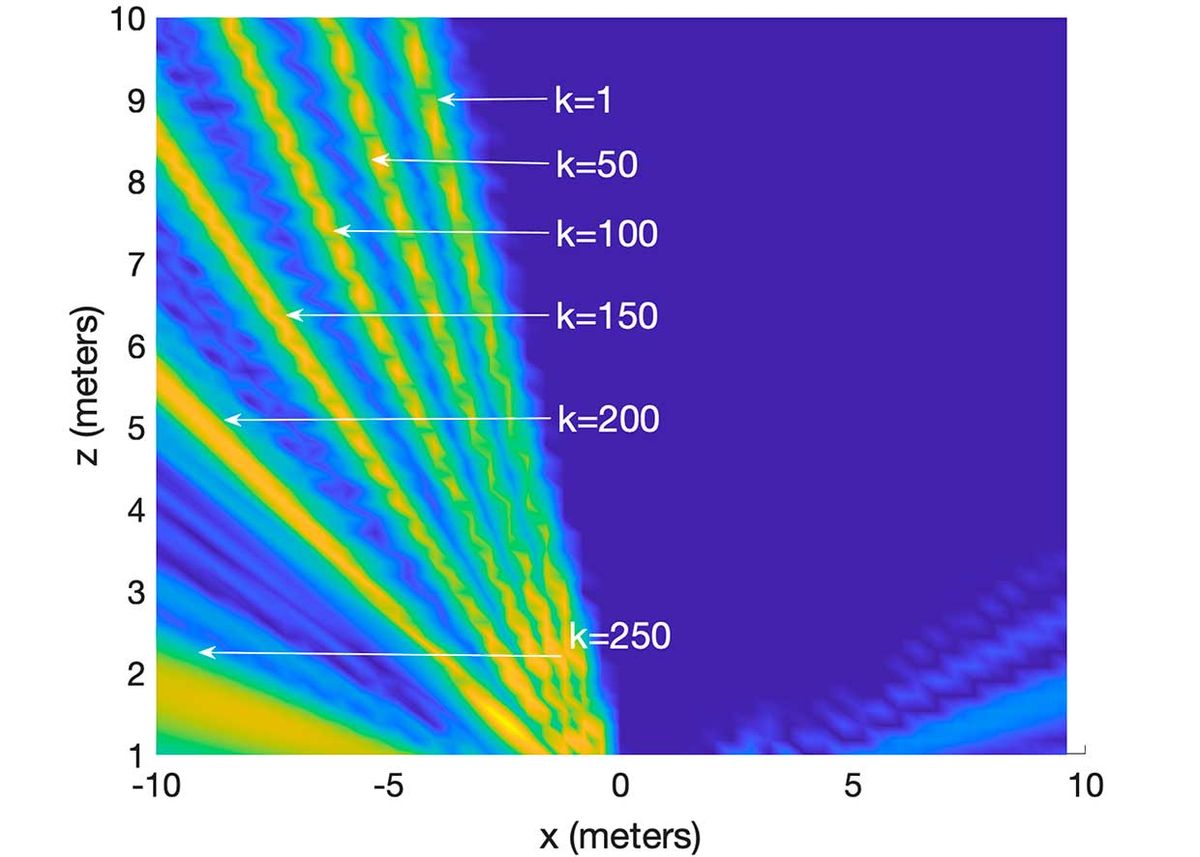The search for better ways to optimize and direct wireless communication is never-ending. These days the uses of metamaterials—marvels of material science engineered to have properties not found in naturally-occurring stuff—also seem to be similarly boundless. Why not use the latter to attempt the former?
This was the basic idea behind a recent theoretical study, published earlier this month in IEEE Transactions on Wireless Communications. In it, Italian scientists describe a means of directing wireless communication signals using a reflective surface made from a metamaterial. This meta “prism” differently redirects microwave and radio signals depending on their frequencies, much the way conventional prisms bend light differently depending on a light beam’s color.
Earlier generations of wireless networks rely on lower frequency electromagnetic waves that can easily penetrate objects and that are omni-directional, meaning a signal can be sent in a general area and does not require a lot of directional precision to be received.
But as these lower frequencies became overburdened with increasing demand, network providers have started using shorter wavelengths, which yield substantially higher rates of data transmission—but require more directional precision. These higher frequencies also must be relayed around objects that the waves cannot penetrate. 5G networks, now being rolled out, require such precision. Future networks that rely on even higher frequencies will too.
Davide Dardari is an Associate Professor at the University of Bologna, Italy, who co-authored the new study. “The idea is rather simple,” he says. “The metaprism we proposed… [is] made of metamaterials capable of modifying the way an impinging electromagnetic field is reflected.”
Just like a regular prism refracts white light to create a rainbow, this proposed metaprism could be used to create and direct an array of different frequencies, or sub-carrier channels. Sub-carrier frequencies would then be assigned to different users and devices based on their positioning.
A major advantage of this approach is that metaprisms, if distributed properly around an area, could passively direct wireless signals, without requiring any power supply. “One or more surfaces designed to act as metaprisms can be deployed in the environment, for example on walls, to generate artificial reflections that can be exploited to enhance the coverage in obstructed areas,” explains Dandari.
He also notes that, because the metaprism would direct the multiple, parallel communication channels in different directions, this will help reduce latency when multiple users are present. “As a [result of these advantages], we expect the cost of the prisms will be much lower than that of the other solutions,” he says.
While this work is currently theoretical, Dandari plans to collaborate with other experts to develop tailored metamaterials required for the metaprism. He also plans to explore the advantages of the metaprism as a means of controlling signal interference.
Michelle Hampson is a freelance writer based in Halifax. She frequently contributes to Spectrum's Journal Watch coverage, which highlights newsworthy studies published in IEEE journals.



